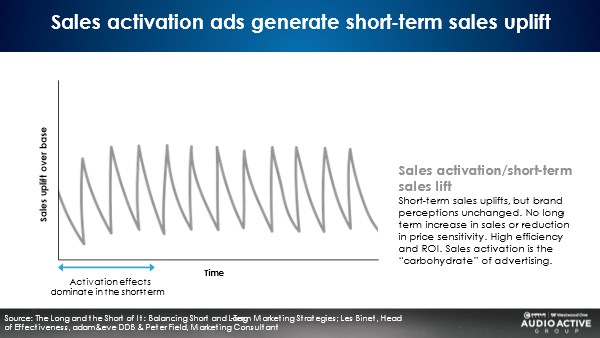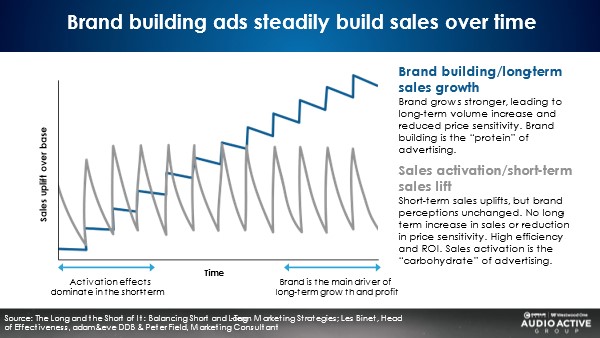I was surprised—and flattered!—at the amount of feedback I received to my “Stop Chasing Meters, Build A Brand” post three weeks ago. In hindsight, I guess I shouldn’t have been, but that feedback warrants additional thoughts and clarifying points....

I was surprised—and flattered!—at the amount of feedback I received to my “Stop Chasing Meters, Build A Brand” post three weeks ago. In hindsight, I guess I shouldn’t have been, but that feedback warrants additional thoughts and clarifying points.
Before I get into those, I want to acknowledge and thank those readers who took the time to email me about the original post. Among my favorites:
“Great piece! Thanks for this.
Build a great brand that solves a problem that people have. Wisely use tactics that are brand-congruent to simultaneously spike ratings and further build the brand.It’s so damn simple. How are we all not killing it every single day???”
“As usual, you are spot on! I hope industry CEOs read this.”
“I think the headline would suffice as a blog, itself!! Great.”
There were also a handful of responses to my post that appeared on industry news sites and company blogs. Inside Radio gave Nielsen Audio’s John Synder an opportunity to point out the oversized impact that heavy listeners have on most stations’ ratings, while former Nielsen executive Ed Cohen authored a story in his column on BarrettNewsMedia.com that pointed out that while John’s analysis was correct, considerable obstacles exist to targeting such heavy listeners. I want to go on record by stating that John and Ed are both correct; we should never underestimate the value of heavy listeners but should also acknowledge that the ability to target such a small group of meter carriers in a station’s target demographic is akin to “finding a needle in a haystack.”

Targeting a small group of meter carriers in a station’s target demographic is akin to finding a needle in a haystack. (Photo credit: Shutterstock)
Research Director’s Steve Allan posted on his company’s blog about their success with building tactical campaigns targeting PPM panelists for their client stations. Steve’s comments echoed feedback I received from more than one of Research Director’s competitors that provide similar services. I did not intend in my original post to imply that such services can’t deliver results; to the contrary, well-executed microtargeting tactical campaigns can boost the usage of a product or service in the short run.
But…
My Coleman Insights colleagues and I still stand firmly behind the point of the original post—building brands is a far more effective and cost-efficient way of attracting listeners to your station, podcast, or stream than relying on tactics designed to generate short-term usage. My colleague Sam Milkman wrote about this in a post last year in which Westwood One’s Pierre Bouvard discussed the work of Les Binet and Peter Field, who have demonstrated the higher ROI long-term brand building generates relative to short-term sales activation.


Tactical efforts should absolutely be a part of your marketing mix—most research suggests they should make up between 30% and 40% of your marketing spend, depending on the state of your brand and the goals of your marketing—but if they are the only thing you’re doing, their impact will be short-lived.
Without contradicting any of the points referenced above by John Synder, I also want to comment on the idea of targeting heavy listeners with your marketing efforts, especially when it comes to radio stations. Tactical efforts targeting them can and often do lead to ratings increases, but in my experience, the biggest issue radio is dealing with today is the decline in the number of people who are heavy listeners. If stations that only engage in tactical marketing effectively market to a group of people that keeps getting smaller, the dollars they spend will have negligible impact on bringing listeners to the medium in the first place. We see in our research that consumers are aware of fewer radio stations than they were in the past; the industry needs more external marketing that makes consumers aware of more stations and the benefits they can derive and the needs they can have fulfilled by listening to them.
So what should you do with your station, podcast, or stream? Here are a few closing points:
Gain an understanding through perceptual research of what your marketing goals should be, especially in terms of balancing branding and tactical efforts. If consumers are aware of your brand and what it offers, explore ways you can effectively use tactical marketing to generate more usage of it, while remembering that you will need to return to brand maintenance on a regular basis. If, however, your brand is not well-known, you should lean on brand-building efforts that make consumers aware of it and communicate why they should use it. Understand that if you only have the budget to conduct tactical marketing, you will need to return to it over and over to sustain the audience gains it hopefully delivers to your station, podcast, or stream. Weave brand building into your tactical marketing, especially when your budget limits you to a tactical-only approach. For example, if you’re a music radio station that has underdeveloped music images, conduct a tactical contest designed to increase consumers’ association with the music you play with your brand rather than a contest that does not.
The post Stop Chasing Meters, Build A Brand – A Follow-Up appeared first on Coleman Insights.


